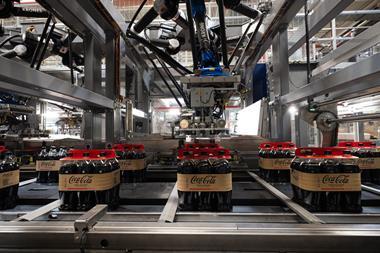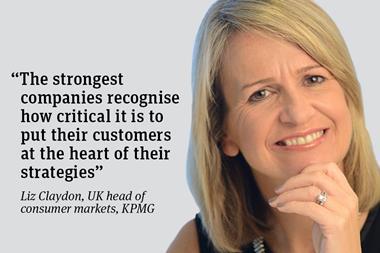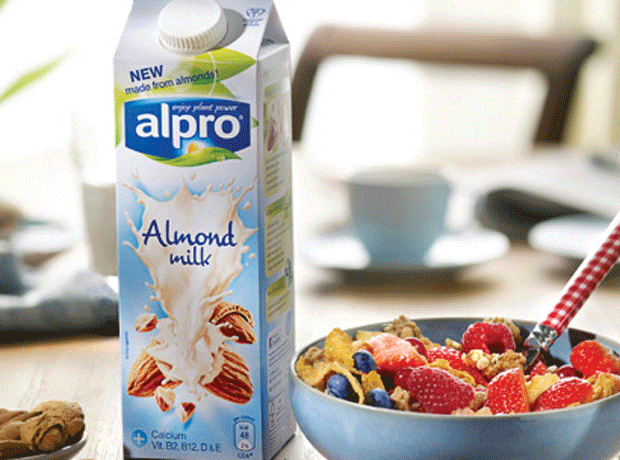>>iceland gets its act together...praise for entrepreneurs
work with buyers for successful pos
from Nigel Davey, marketing manager, Retail Testing Limited
newcomers merit more coverage
from Trevor Winstanley, managing director, TAW Associates
When we last visited Iceland, in our September 13 issue, we predicted that the frozen food retailer would be back into positive sales growth in its second quarter. Figures posted this week show we were right: like-for-like sales at the high street chain were up 1.7% in the quarter ending September 26.
Now before anybody gets too excited about the sales figures, it is worth pointing out that they do represent a comparison with a particularly bad period last year. And given that fact, some analysts believe Iceland, and parent company the Big Food Group, should have done slightly better. Nonetheless, it is encouraging to see that one of the chains so often written off has got its act together and is driving business in the right direction.
Iceland has to work hard to draw in shoppers who may otherwise be tempted to head for rival operators with a strong price message. I’m not just talking Tesco, Asda or Morrisons either. Many our contacts in the trade are equally impressed by the growth they are seeing at Farmfoods, the ultra-secretive frozen food discounter that ranks number two in The Grocer Top 50.
But a combination of clearer promotions, renewed investment in stores, a focus on product quality and innovation, and a nifty new ad campaign could yet do the trick for Iceland.
The chain used to boast through the 1990s that “Mum’s gone to Iceland”. And for the first time in many years that appears, once again, to be true.
Congratulations to Robert Wiseman of Wiseman Dairies, Alastair and Douglas Irvine of cheese maker McLelland, and Adam Balon, Richard Reed and Jonathan Wright of Innocent Drinks, who all emerged as winners in this year’s Ernst & Young Entrepreneur of the Year Awards.
What a truly fantastic result for the food industry. Their achievements underline the fact that this is a great industry in which to work. More importantly, their stories demonstrate that despite all the pressures faced by food suppliers, there are still plenty of opportunities for innovative individuals to build up successful businesses. Such success does not come easy, but they at least have shown how it can be done.
Sir; Your article ‘Tackling the compliance crisis’ (The Grocer, September 27, p36) struck a chord. I worked in management at a major supermarket for more than a decade, during which time I received countless pieces of point-of-purchase (POP) material.
There were two reasons that the point of purchase material would go into the bin instead of onto the shopfloor: either there was too much on display already or it took too long to assemble.
I had enough to do without spending hours trying to work out how to assemble a display shipper.
Now I am working for a retail market research company, I find the boot is on the other foot.
Walking into a store and trying to identify the person who knows about the research project we are doing and getting point of purchase material installed is bad enough.
But finding out from our field force that the material has mysteriously disappeared since our visit gives a good indication of what is good and what is not.
My advice to suppliers is to work with buyers and identify times when your POP material will be more visible - not when there is a multitude of other material scheduled to be on display.
If you want to install something new, carry out research. Trial the material in a small number of stores and measure its effectiveness.
If the POP needs assembling, give it to a few people outside the brand team or production agency and see how long it takes for them to assemble it. If they get it right first time and it takes less than 10 to 15 minutes, then it has a good chance of reaching the shopfloor. If not, review the POP.
Sir; I was disappointed with your focus on confectionery (The Grocer, September 27, p41).
The feature concentrated on established brands and gave no recognition to up and coming products. There have been several recent entries to the UK that are proving successful with consumers and retailers, but none were mentioned.
The article did address the problem of the lack of funds for new product development, but only in the context of the major players. We need to look further than the obvious brands. For example, TAW Associates is importing Australia’s leading mint and gum, JILA, into the UK. It will compete with existing brands on issues such as packaging and natural ingredients, and is carbohydrate free. Let’s see the whole market, not just the top 10!
Is mum back at iceland?
What a result!
work with buyers for successful pos
from Nigel Davey, marketing manager, Retail Testing Limited
newcomers merit more coverage
from Trevor Winstanley, managing director, TAW Associates
When we last visited Iceland, in our September 13 issue, we predicted that the frozen food retailer would be back into positive sales growth in its second quarter. Figures posted this week show we were right: like-for-like sales at the high street chain were up 1.7% in the quarter ending September 26.
Now before anybody gets too excited about the sales figures, it is worth pointing out that they do represent a comparison with a particularly bad period last year. And given that fact, some analysts believe Iceland, and parent company the Big Food Group, should have done slightly better. Nonetheless, it is encouraging to see that one of the chains so often written off has got its act together and is driving business in the right direction.
Iceland has to work hard to draw in shoppers who may otherwise be tempted to head for rival operators with a strong price message. I’m not just talking Tesco, Asda or Morrisons either. Many our contacts in the trade are equally impressed by the growth they are seeing at Farmfoods, the ultra-secretive frozen food discounter that ranks number two in The Grocer Top 50.
But a combination of clearer promotions, renewed investment in stores, a focus on product quality and innovation, and a nifty new ad campaign could yet do the trick for Iceland.
The chain used to boast through the 1990s that “Mum’s gone to Iceland”. And for the first time in many years that appears, once again, to be true.
Congratulations to Robert Wiseman of Wiseman Dairies, Alastair and Douglas Irvine of cheese maker McLelland, and Adam Balon, Richard Reed and Jonathan Wright of Innocent Drinks, who all emerged as winners in this year’s Ernst & Young Entrepreneur of the Year Awards.
What a truly fantastic result for the food industry. Their achievements underline the fact that this is a great industry in which to work. More importantly, their stories demonstrate that despite all the pressures faced by food suppliers, there are still plenty of opportunities for innovative individuals to build up successful businesses. Such success does not come easy, but they at least have shown how it can be done.
Sir; Your article ‘Tackling the compliance crisis’ (The Grocer, September 27, p36) struck a chord. I worked in management at a major supermarket for more than a decade, during which time I received countless pieces of point-of-purchase (POP) material.
There were two reasons that the point of purchase material would go into the bin instead of onto the shopfloor: either there was too much on display already or it took too long to assemble.
I had enough to do without spending hours trying to work out how to assemble a display shipper.
Now I am working for a retail market research company, I find the boot is on the other foot.
Walking into a store and trying to identify the person who knows about the research project we are doing and getting point of purchase material installed is bad enough.
But finding out from our field force that the material has mysteriously disappeared since our visit gives a good indication of what is good and what is not.
My advice to suppliers is to work with buyers and identify times when your POP material will be more visible - not when there is a multitude of other material scheduled to be on display.
If you want to install something new, carry out research. Trial the material in a small number of stores and measure its effectiveness.
If the POP needs assembling, give it to a few people outside the brand team or production agency and see how long it takes for them to assemble it. If they get it right first time and it takes less than 10 to 15 minutes, then it has a good chance of reaching the shopfloor. If not, review the POP.
Sir; I was disappointed with your focus on confectionery (The Grocer, September 27, p41).
The feature concentrated on established brands and gave no recognition to up and coming products. There have been several recent entries to the UK that are proving successful with consumers and retailers, but none were mentioned.
The article did address the problem of the lack of funds for new product development, but only in the context of the major players. We need to look further than the obvious brands. For example, TAW Associates is importing Australia’s leading mint and gum, JILA, into the UK. It will compete with existing brands on issues such as packaging and natural ingredients, and is carbohydrate free. Let’s see the whole market, not just the top 10!
Is mum back at iceland?
What a result!















No comments yet